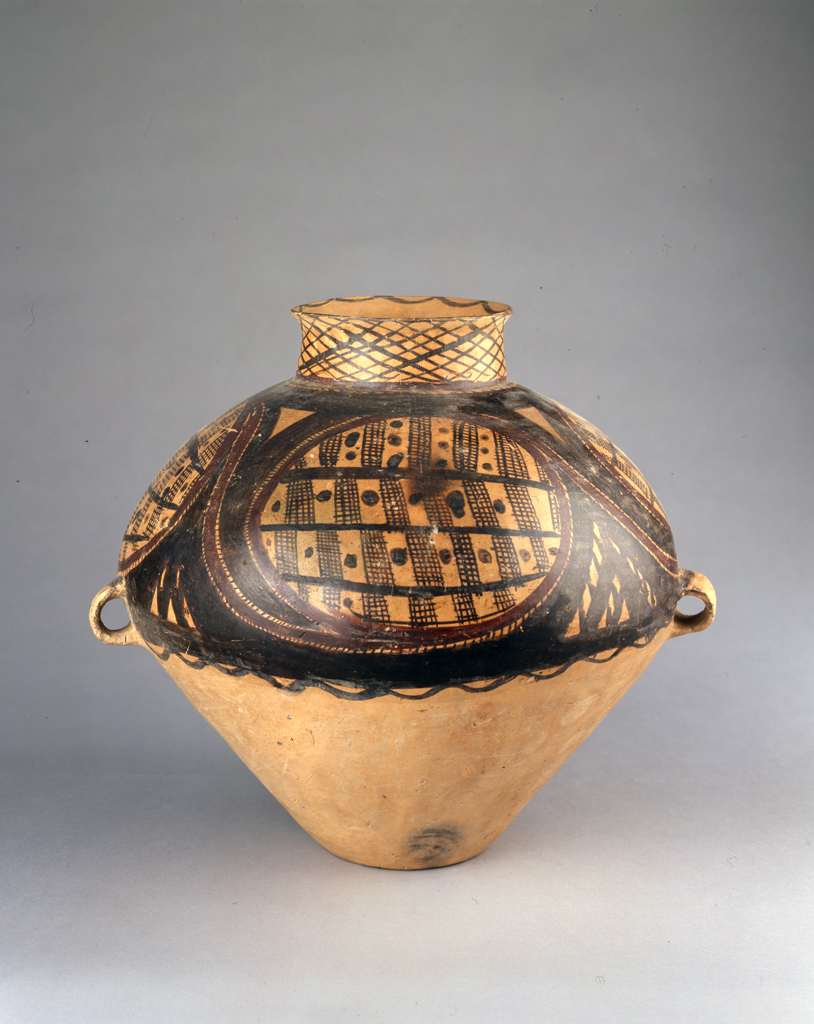Large storage jar with two loop handles spiral and crisscross designs

China, Gansu province, Majiayao culture, Banshan type, Large storage jar with two loop handles spiral and crisscross designs, 2650/2350 BCE, red earthenware with design painted in black, dark brown, and burgundy slip, Gift of an Anonymous Donor, public domain, 1997.9
This work is not currently on view.
- Title
Large storage jar with two loop handles spiral and crisscross designs
- Related Titles
display title: Large storage jar with spiral and crisscross designs
original language: 彩陶壺
translated: Large storage jar with spiral and net designs
- Artist
China, Gansu province, Majiayao culture, Banshan type (Chinese)
- Date
2650/2350 BCE
- Period
Neolithic (7th millennium BCE-10th century BCE)
- Medium
red earthenware with design painted in black, dark brown, and burgundy slip
- Dimensions (H x W x D)
13 1/4 in x 14 in diam.
- Collection Area
Asian Art
- Category
Ceramics
- Object Type
vessel
- Culture
Chinese
Yangshao
- Credit Line
Gift of an Anonymous Donor
- Accession Number
1997.9
- Copyright
public domain
- Terms
Of several different regional cultures in China during the Neolithic period (5000–2000 BCE), the Majiayao in the northwest is most famous for its painted pottery. Small riverside villages had ready access to riverbed clay. The potter of this vessel worked by building up coils of clay, pinching them together, and then striking the surface with a paddle both inside and out to compact the walls. The jar was then dried, painted with pigments made from soot or local plants, and polished to a high shine before being fired in a simple kiln. The designs may refer to fishing nets, so crucial for the village’s food supply. This jar is surprisingly light for its size.









